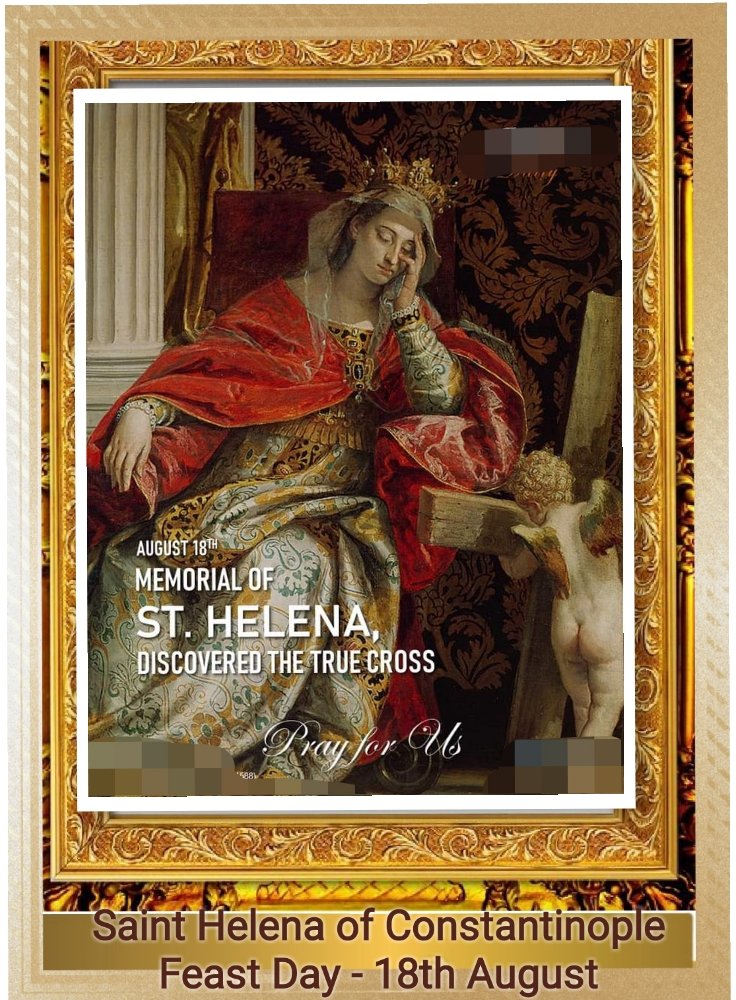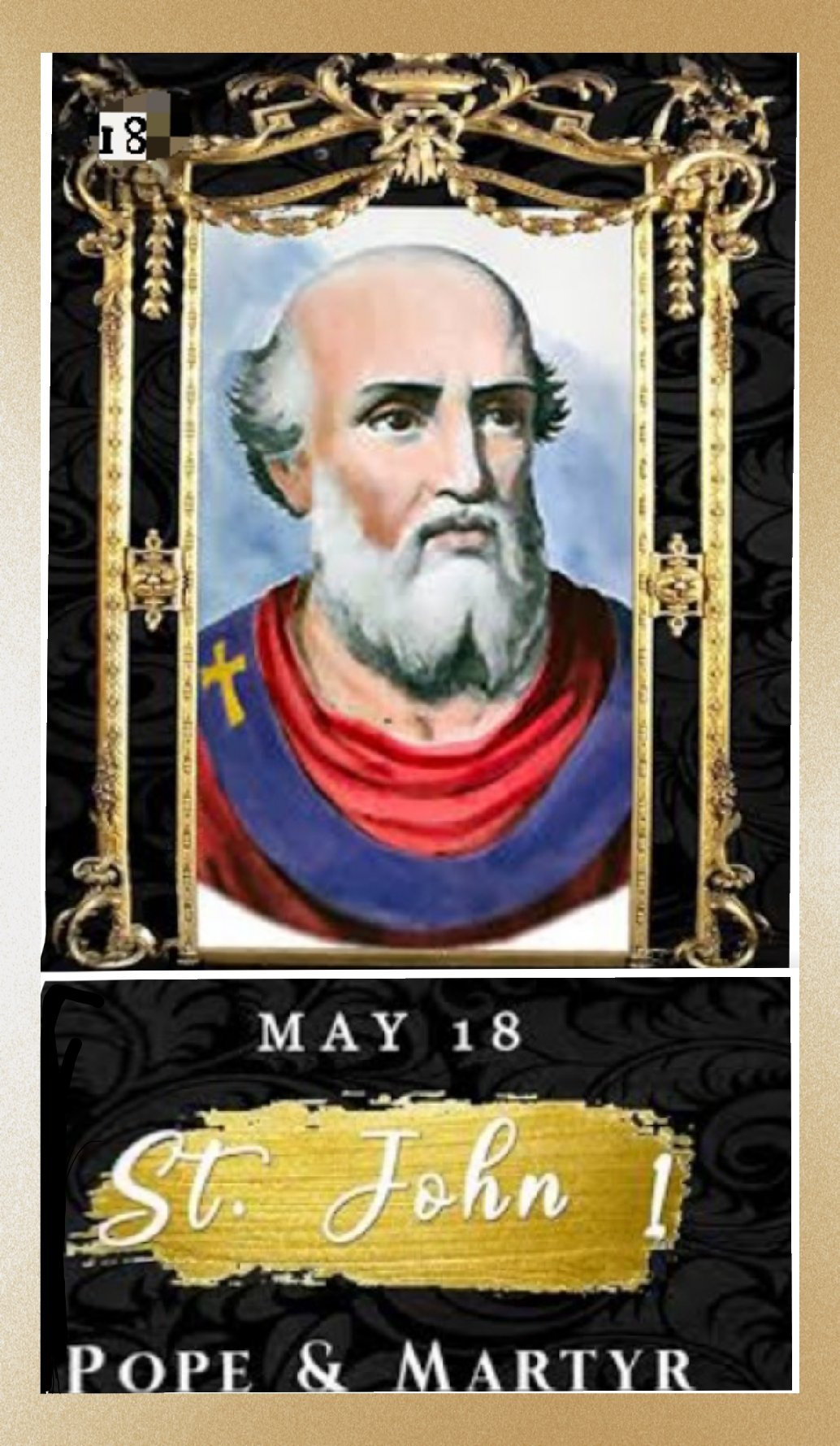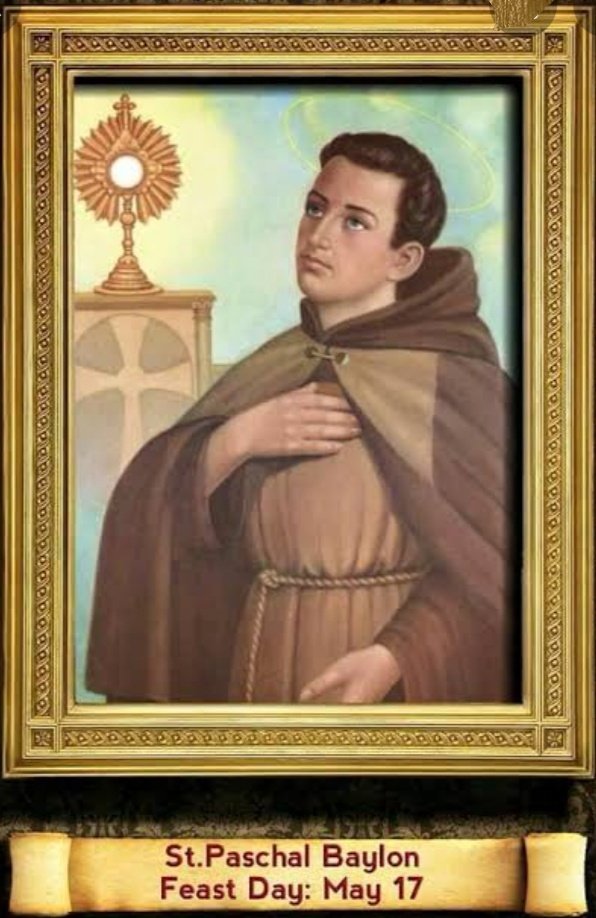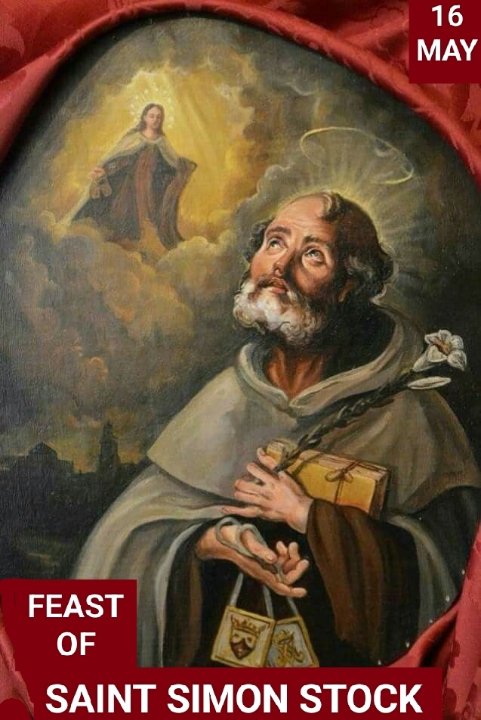FEAST OF SAINT HELENA OF CONSTANTINOPLE
FEAST DAY – 18th AUGUST
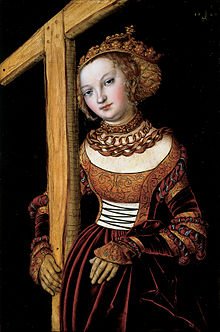
Helena, Helena Augusta, (c. 246/248 AD – c. 330) was an Empress of the Roman Empire and mother of Roman emperor Constantine the Great. She was born in the lower classes traditionally in the Greek city of Drepanon, Bithynia, in Asia Minor, which was renamed Helenopolis in her honor, though several locations have been proposed for her birthplace and origin.
Helena ranks as an important figure in the history of Christianity. In her final years, she made a religious tour of Syria Palestina and Jerusalem, during which ancient tradition claims that she discovered the True Cross. The Eastern Orthodox Church, Catholic Church, Oriental Orthodox Churches, and Anglican Communion revere her as a saint, and the Lutheran Church commemorates her.
The 6th-century historian Procopius is the earliest authority for the statement that Helena was a native of Drepanum, in the province of Bithynia in Asia Minor. The name Helena appears in all areas of the Empire, but is not epigraphically attested in inscriptions of Bithynia (Helena’s proposed region of origin) and it was also common in Latin-speaking areas.
Procopius lived much later than the era he was describing and his description may have been actually intended as an etymological explanation about the toponym Helenopolis. On the other hand, her son Constantine renamed the city “Helenopolis” after her death around 330 AD, which supports the belief that the city was indeed her birthplace.

The Byzantinist Cyril Mango has, however, argued that Helenopolis was refounded to strengthen the communication network around Constantine’s new capital in Constantinople, and was renamed simply to honor Helena, not to necessarily mark her birthplace. There was also a Helenopolis in Palestine and a Helenopolis in Lydia. These cities, and the province of Helenopontus in the Pontus, were probably all named after Constantine’s mother.
Two other locations in France and the Pyrenees have been named after Helena. Equally uncertain to Drepanum and without strong documentation suggestions about her birthplace are: Naissus (central Balkans), Caphar or Edessa (Messopotamia), Trier. The bishop and historian Eusebius of Caesarea states that Helena was about 80 on her return from Palestine.
Since that journey has been dated to 326–28, she was probably born around 246 to 249. Information about her social background universally suggests that she came from the lower classes. Fourth-century sources, following Eutropius’ Breviarium, record that she came from a humble background. Bishop Ambrose of Milan, writing in the late 4th century was the first to call her a stabularia, a term translated as “stable-maid” or “inn-keeper”.
He makes this comment a virtue, calling Helena a bona stabularia, a “good stable-maid”, probably to contrast her with the general suggestion of sexual laxness considered typical of that group; but she initially was probably not married to Constantius. Other sources, especially those written after Constantine’s proclamation as emperor, gloss over or ignore her background.
It is unknown where she first met Constantius. The historian Timothy Barnes has suggested that Constantius, while serving under Emperor Aurelian, could have met her while stationed in Asia Minor for the campaign against Zenobia. It is said that upon meeting they were wearing identical silver bracelets; Constantius saw her as his soulmate sent by God.
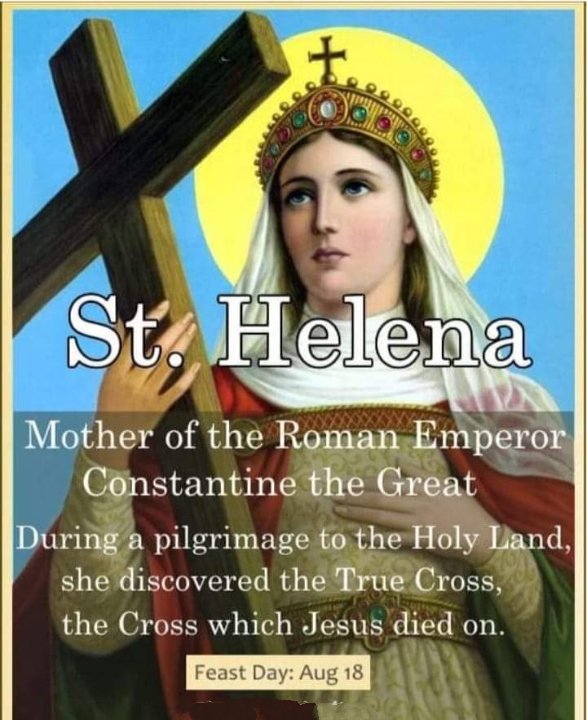
Barnes calls attention to an epitaph at Nicomedia of one of Aurelian’s protectors, which could indicate the emperor’s presence in the Bithynian region soon after 270 AD. The precise legal nature of the relationship between Helena and Constantius is also unknown. The sources are equivocal on the point, sometimes calling Helena Constantius’ “wife”, and sometimes, following the dismissive propaganda of Constantine’s rival Maxentius, calling her his “concubine”.
Jerome, perhaps confused by the vague terminology of his own sources, manages to do both. Some scholars, such as the historian Jan Drijvers, assert that Constantius and Helena were joined in a common-law marriage, a cohabitation recognized in fact but not in law. Others, like Timothy Barnes, assert that Constantius and Helena were joined in an official marriage, on the grounds that the sources claiming an official marriage are more reliable.
Helena gave birth to the future emperor Constantine I on 27 February of an uncertain year soon after 270 (probably around 272). At the time, she was in Naissus (Niš, Serbia). In order to obtain a wife more consonant with his rising status, Constantius divorced Helena some time before 289, when he married Theodora, Maximian’s daughter under his command. (The narrative sources date the marriage to 293, but the Latin panegyric of 289 refers to the couple as already married).
Helena and her son were dispatched to the court of Diocletian at Nicomedia, where Constantine grew to be a member of the inner circle. Helena never remarried and lived for a time in obscurity, though close to her only son, who had a deep regard and affection for her. Constantine was proclaimed Augustus of the Roman Empire in 306 by Constantius’ troops after the latter had died.

Following his elevation his mother was brought back to the public life in 312, returning to the imperial court. She appears in the Eagle Cameo portraying Constantine’s family, probably commemorating the birth of Constantine’s son Constantine II in the summer of 316. She received the title of Augusta in 325. According to Eusebius, her conversion to Christianity followed her son becoming emperor.
Constantine appointed his mother Helena as Augusta Imperatrix, and gave her unlimited access to the imperial treasury in order to locate the relics of the Christian tradition. In 326–28 AD Helena undertook a trip to Palestine. According to Eusebius of Caesarea (260/265 – 339/340), who records the details of her pilgrimage to Palestine and other eastern provinces.
She was responsible for the construction or beautification of two churches, the Church of the Nativity, Bethlehem, and the Church of Eleona on the Mount of Olives, sites of Christ’s birth and ascension, respectively. Local founding legend attributes to Helena’s orders the construction of a church in Egypt to identify the Burning Bush of Sinai. The chapel at Saint Catherine’s Monastery—often referred to as the Chapel of Saint Helen—is dated to the year 330.
Jerusalem was still being rebuilt following the destruction caused by Titus in 70 AD. Emperor Hadrian had built during the 130s a temple to Venus over the supposed site of Jesus’ tomb near Calvary, and renamed the city Aelia Capitolina. Accounts differ concerning whether the temple was dedicated to Venus or Jupiter. According to Eusebius, “[t]here was a temple of Venus on the spot. This the queen (Helena) had destroyed.”
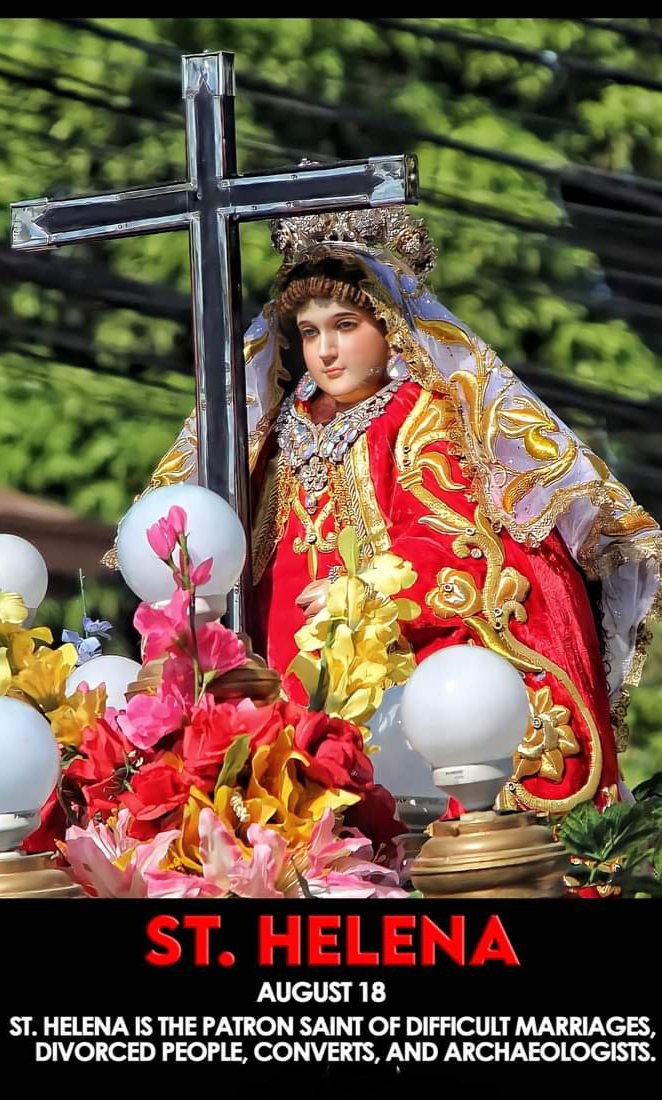
According to tradition, Helena ordered the temple torn down and, according to the legend that arose at the end of the 4th century, chose a site to begin excavating, which led to the recovery of three different crosses. The legend is recounted in Ambrose, On the Death of Theodosius (died 395) and at length in Rufinus’ chapters appended to his translation into Latin of Eusebius’s Ecclesiastical History, the main body of which does not mention the event.
Then, Rufinus relates, the empress refused to be swayed by anything short of solid proof and performed a test. Possibly through Bishop Macarius of Jerusalem, she had a woman who was near death brought from the city. When the woman touched the first and second crosses, her condition did not change, but when she touched the third and final cross she suddenly recovered, and Helena declared the cross with which the woman had been touched to be the True Cross.
On the site of discovery, Constantine ordered the building of the Church of the Holy Sepulchre. Churches were also built on other sites detected by Helena. The “Letter From Constantine to Macarius of Jerusalem”, as presented in Eusebius’ Life of Constantine, states:
“Such is our Saviour’s grace, that no power of language seems adequate to describe the wondrous circumstance to which I am about to refer. For, that the monument of his [Christ’s] most holy Passion, so long ago buried beneath the ground, should have remained unknown for so long a series of years, until its reappearance to his servants now set free through the removal of him who was the common enemy of all, is a fact which truly surpasses all admiration.
I have no greater care than how I may best adorn with a splendid structure that sacred spot, which, under Divine direction, I have disencumbered as it were of the heavy weight of foul idol worship [the Roman temple]; a spot which has been accounted holy from the beginning in God’s judgment, but which now appears holier still, since it has brought to light a clear assurance of our Saviour’s passion.”
Sozomen and Theodoret claim that Helena also found the nails of the crucifixion. To use their miraculous power to aid her son, Helena allegedly had one placed in Constantine’s helmet, and another in the bridle of his horse. According to one tradition, Helena acquired the Holy Tunic on her trip to Jerusalem and sent it to Trier.
Several relics purportedly discovered by Helena are now in Cyprus, where she spent some time. Among them are items believed to be part of Jesus Christ’s tunic, pieces of the holy cross, and pieces of the rope with which Jesus was tied on the Cross. The rope, considered to be the only relic of its kind, has been held at the Stavrovouni Monastery, which was also said to have been founded by Helena.
According to tradition, Helena is responsible for the large population of cats in Cyprus. Local tradition holds that she imported hundreds of cats from Egypt or Palestine in the fourth century to rid a monastery of snakes. The monastery is today known as “St. Nicholas of the Cats” and is located near Limassol.
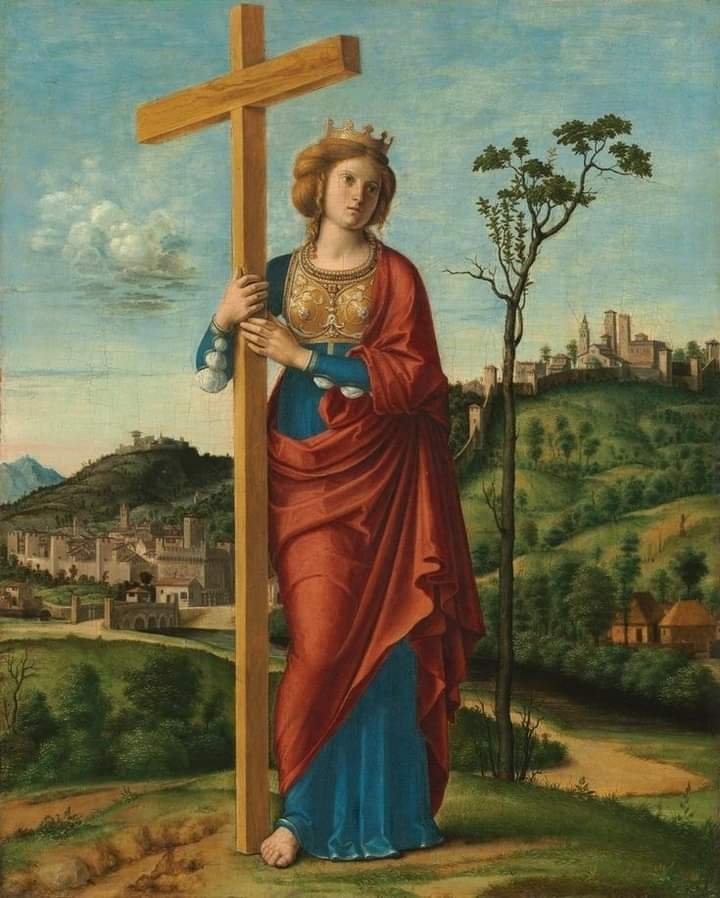
Helena left Jerusalem and the eastern provinces in 327 to return to Rome, bringing with her large parts of the True Cross and other relics, which were then stored in her palace’s private chapel, where they can be still seen today. Her palace was later converted into the Basilica of the Holy Cross in Jerusalem. This has been maintained by Cistercian monks in the monastery which has been attached to the church for centuries.
Helena died around 330, with her son at her side. She was buried in the Mausoleum of Helena, outside Rome on the Via Labicana. Her sarcophagus is on display in the Pio-Clementine Vatican Museum, although the connection is often questioned. Next to her is the sarcophagus of her granddaughter Constantina (Saint Constance).
Helena is considered by the Eastern Orthodox, Oriental Orthodox, Eastern and Roman Catholic churches, as well as by the Anglican Communion and Lutheran Churches, as a saint. She is sometimes known as Helen of Constantinople to distinguish her from others with similar names, and is “Ilona” in Hungarian, and “Liena” in Malta.
Her feast day as a saint of the Eastern Orthodox Church is celebrated with her son on 21 May, the “Feast of the Holy Great Sovereigns Constantine and Helena, Equal to the Apostles”. Her feast day in the Roman Catholic Church and in Antiochian Western Rite Vicariate falls on 18 August. In the Coptic Orthodox Church it is on 9 Pashons. Some Anglican and Lutheran churches keep the 21 May date. Helena is honored in the Church of England on 21 May, in the Episcopal Church on 22 May.
Her discovery of the Cross along with Constantine is dramatised in the Santacruzan, a ritual pageant in the Philippines. Held in May (when Roodmas was once celebrated), the procession also bears elements of the month’s Marian devotions. Helena is the patron saint of new discoveries.
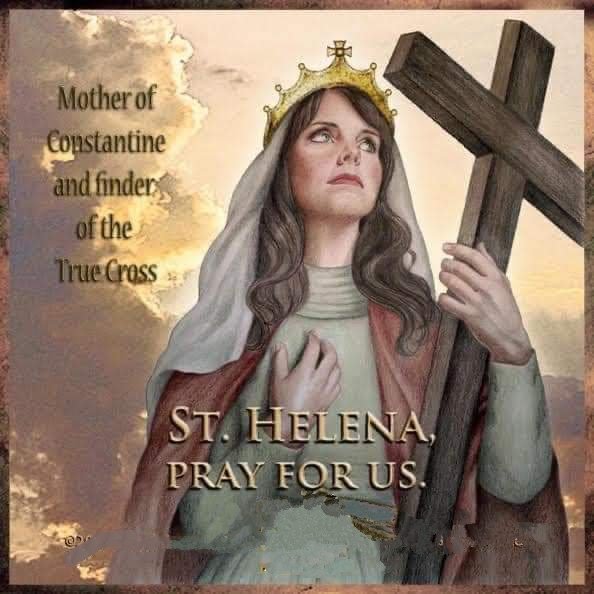
In the Ethiopian and Eritrean Orthodox Tewahedo Churches, the feast of Meskel, which commemorates her discovery of the cross, is celebrated on 17 Meskerem in the Ethiopian calendar (September 27, Gregorian calendar, or on 28 September in leap years). The holiday is usually celebrated with the lighting of a large bonfire, or Demera, based on the belief that she had a revelation in a dream.
She was told that she should make a bonfire and that the smoke would show her where the true cross was buried. So she ordered the people of Jerusalem to bring wood and make a huge pile. After adding frankincense to it the bonfire was lit and the smoke rose high up to the sky and returned to the ground, exactly to the spot where the Cross had been buried. Uncovering of the Precious Cross and the Precious Nails (Roodmas) by Empress Saint Helen in Jerusalem falls on 6 March.
She is also commemorated every Bright Wednesday along with the saints from Mount Sinai, by the Russian Orthodox Church and the Orthodox Church in America. Her alleged skull is displayed in the Cathedral of Trier, in Germany. Portions of her relics are found at the basilica of Santa Maria in Ara Coeli in Rome, the Église Saint-Leu-Saint-Gilles in Paris, and at the Abbaye Saint-Pierre d’Hautvillers.
The church of Sant’Elena in Venice claims to have the complete body of the saint enshrined under the main altar. In 1517, the English priest, Richard Torkington, having seen the relics during a visit to Venice described them as follows: “She lith in a ffayr place of religion, of white monks, ye may see her face perfythly, her body ys covered with a cloth of whith sylke … Also there lyes upon her breast a lytell crosse made of the holy crosse …”
In an ecumenical gesture, these relics visited the Orthodox Church of Greece and were displayed in the church of Agia Varvara (Saint Barbara) in Athens from 14 May to 15 June 2017. Helena had two wishes. She wanted to be a good mother. And she was. She wanted to find the cross on which Jesus had been crucified. And she did.
Helena became a Christian when she was 63 years old. Then she went to Palestine to see where Jesus had walked and talked and died. While in Palestine, Helena had workers dig in the ground. They found a cross. Helena believed that Jesus had died on that cross, and she brought large parts of it back to Rome with her. On that site in Jerusalem was built the Church of the Holy Sepulchre.
Helena also ordered a church built at the Mount of Olives. Jesus had prayed there on the night before he died. She also built a church in Bethlehem at the site where Jesus was born.
PRAYER
Dear God our Father, your Holy Saint Helena of Constantinople helped your people by building churches, but she was also kind to soldiers, prisoners, and the poor. Her kindness showed them how Jesus took care of others. Her life showed everyone your goodness.
May we live our lives with her as an example of how to spread the faith by our good and selfless living, to make known the Name of Jesus to all peoples of the world. In Jesus’ Name. Amen
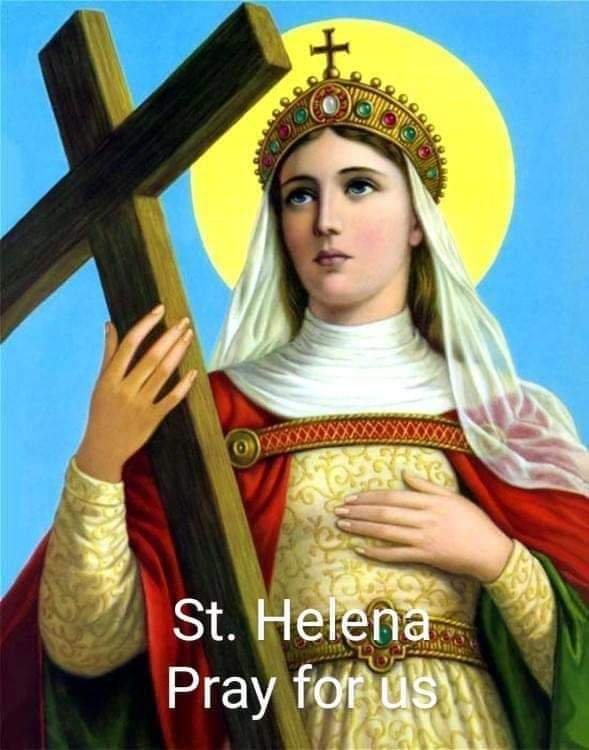
St. Helena, pray for us.

